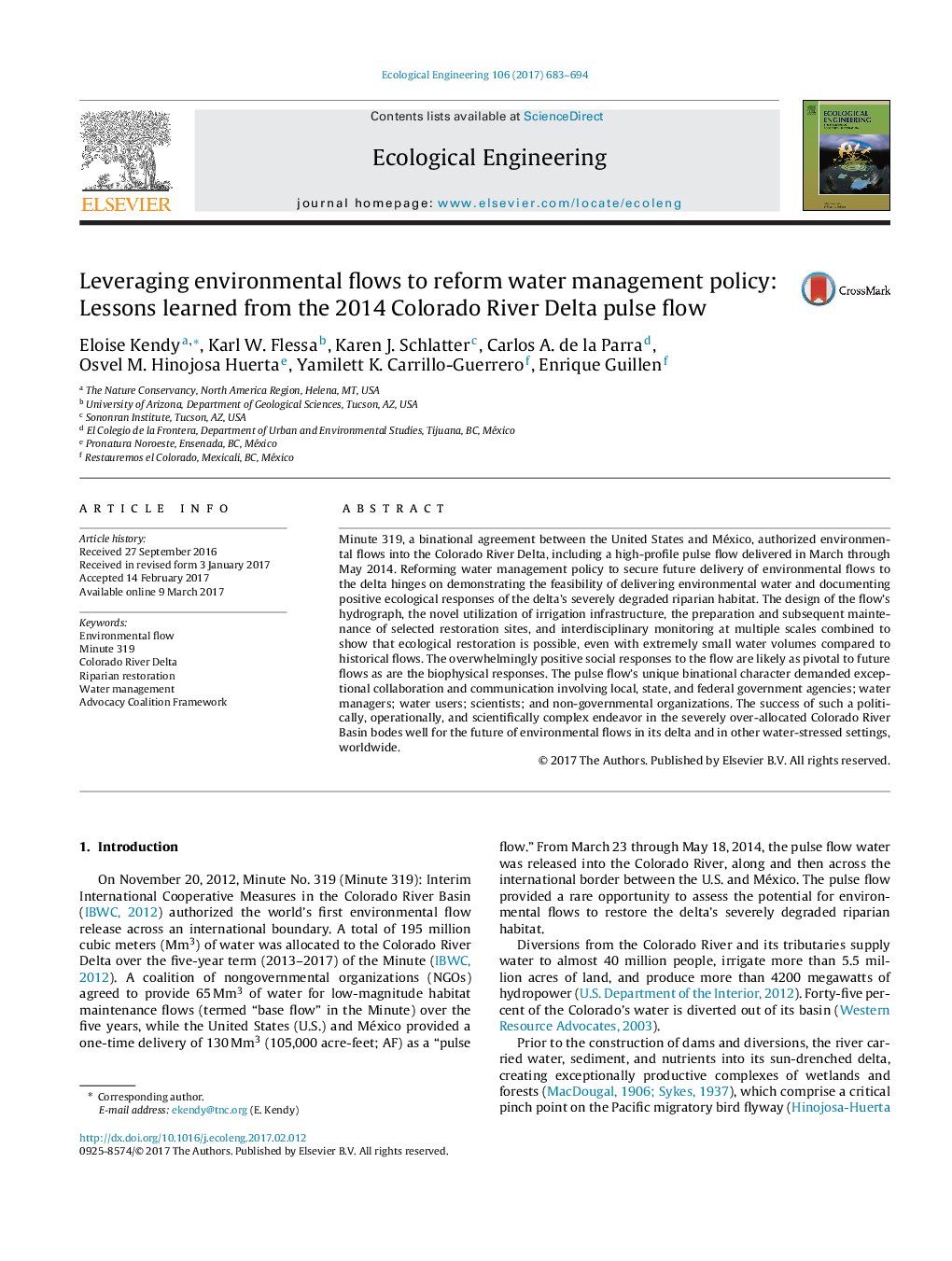| Article ID | Journal | Published Year | Pages | File Type |
|---|---|---|---|---|
| 5743689 | Ecological Engineering | 2017 | 12 Pages |
â¢Minute 319 authorized a 130-Mm3 “pulse flow” of water into the Colorado River Delta.â¢Its binational nature demanded exceptional communication and collaboration.â¢Results show ecological restoration is possible, even with this small water volume.â¢Active restoration site preparation and management were key to ecological success.â¢Social responses were as critical as scientific analyses for securing future flows.
Minute 319, a binational agreement between the United States and México, authorized environmental flows into the Colorado River Delta, including a high-profile pulse flow delivered in March through May 2014. Reforming water management policy to secure future delivery of environmental flows to the delta hinges on demonstrating the feasibility of delivering environmental water and documenting positive ecological responses of the delta's severely degraded riparian habitat. The design of the flow's hydrograph, the novel utilization of irrigation infrastructure, the preparation and subsequent maintenance of selected restoration sites, and interdisciplinary monitoring at multiple scales combined to show that ecological restoration is possible, even with extremely small water volumes compared to historical flows. The overwhelmingly positive social responses to the flow are likely as pivotal to future flows as are the biophysical responses. The pulse flow's unique binational character demanded exceptional collaboration and communication involving local, state, and federal government agencies; water managers; water users; scientists; and non-governmental organizations. The success of such a politically, operationally, and scientifically complex endeavor in the severely over-allocated Colorado River Basin bodes well for the future of environmental flows in its delta and in other water-stressed settings, worldwide.
